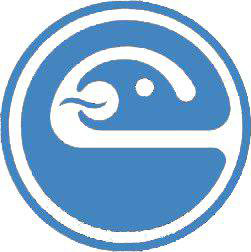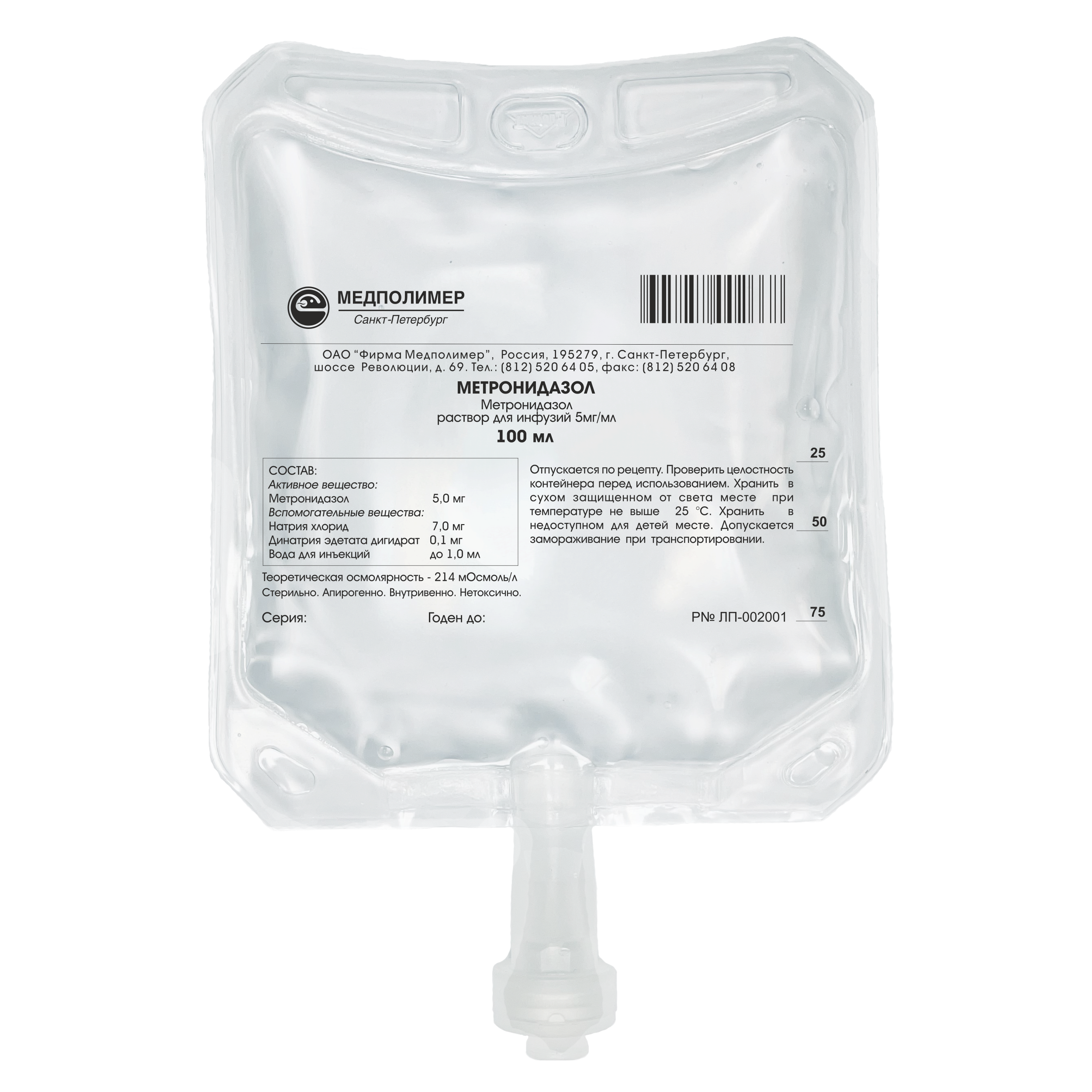

About Us
Manufacture
Products
Procurement
Working at Medpolymer
- Contact Us
- Ru

Marketing Authorisation No. LP002001
Composition:
Metronidazole — 5.0 mg,
Sodium chloride– 7.0 mg,
Disodium edetate dihydrate – 0.5 mg,
Water for injections – up to 1 mL.
Theoretical osmolarity – 214 mOsmol/L.
Therapeutic class: antimicrobial and antiprotozoal agent.
Pharmacological properties.
Pharmacodynamics. Antiprotozoal and antibacterial drug, 5-nitroimidazole derivative. The mode of action is the biochemical reduction of 5-nitro group of metronidazole by intracellular transport proteins of anaerobic microorganisms and protozoa. The reduced 5-nitro group of metronidazole interacts with the DNA of microbial cells, inhibiting their nucleic acid synthesis that leads to the bacterial death.
It is active against Trichomonas vaginalis, as well as against Gram-negative anaerobes Bacteroides spp. (including Bacteroides fragilis, Bacteroides distasonis, Bacteroides ovatus, Bacteroides thetaiotaomicron, Bacteroides vulgatus), Fusobacterium spp. and some gram-positive anaerobes (sensitive strains of Eubacterium spp., Clostridium spp., Peptococcus niger., Peptostreptococcus spp.). The minimum inhibitory concentration for these strains is 0.125 to 6.25 µg/ml. In combination with amoxicillin it demonstrates activity against Helicobacter pylori. Aerobic microorganisms and amphimicrobians are not sensitive to metronidazole, but in the presence of mixed flora (aerobes and anaerobes) metronidazole acts synergistically with antibiotics effective against common aerobes. Increases the tumor sensitivity to radiation, causes disulfiram-like reactions.
Indications. Protozoal infections: extra-intestinal amebiasis, including amebic liver abscess, intestinal amebiasis (amebic dysentery), trichomoniasis (including trichomonas vaginalis, trichomonas urethritis). Infections caused by Bacteroides spp. (including Bacteroides fragilis, Bacteroides distasonis, Bacteroides ovatus, Bacteroides thetaiotaomicron, Bacteroides vulgatus): Bone and joint infections, central nervous system (CNS) infections, including meningitis, brain abscess, bacterial endocarditis, pneumonia, pulmonary empyema and abscess, sepsis. Infections caused by Clostridium spp., Peptococcus and Peptostreptococcus species: abdominal infections (peritonitis, liver abscess), infections of the pelvic organs (endometritis, endomiometritis, fallopian tube and ovarian abscess, infections of the vaginal fornix). Prevention of postoperative complications (especially interventions on the colon, pararectal area, appendectomy, gynecological operations). Radiation therapy of patients with tumors - as a radiation-sensitizing drug, in cases where tumor resistance is due to hypoxia in tumor cells.
Shelf life: 2 years.